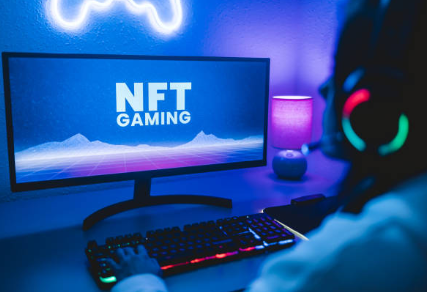Ever wanted to own a piece of internet history or get in on the ground floor of the next big thing? Well, have you heard of NFTs? NFT stands for non-fungible token, and they’re revolutionizing digital ownership and scarcity. An NFT is a unique digital item with blockchain-based ownership. NFTs have become a hot new asset class for collectors. Some have sold for millions of dollars at major auction houses. While the hype around certain NFTs may seem overblown, the underlying technology is here to stay. NFTs unlock new possibilities for rare digital goods and experiences. For collectors, they represent an opportunity to own a scarce piece of internet culture. Love them or hate them, NFTs are poised to shape the future of ownership in the digital world. The future is fungible.
What Are NFTs and How Do They Work?

Unlike cryptocurrencies such as Bitcoin, each NFT is unique and non-interchangeable. They can represent collectible items like art, gaming items, and other real-world tangible assets.
How do NFTs work?
NFTs are created by uploading files like images, videos, GIFs, and music to a blockchain platform like Ethereum. The NFT is a digital certificate of authenticity and ownership for that digital file.
- When an NFT is minted, it’s given a unique identifying code and metadata that distinguishes it from any other NFT.
- The creator can sell the NFT on a secondary market similar to a traditional collectible. Once purchased, the new owner receives the NFT deed showing they own the original digital file.
- NFT ownership is transparent and trackable since the blockchain serves as a public ledger. The owner’s wallet address is permanently tied to the NFT.
NFTs have become popular for collectible items like NBA Top Shot video highlights, virtual real estate in games like Decentraland, and digital art. For collectors, NFTs represent an exciting new frontier to own rare and valuable digital goods that can gain value over time as they become more scarce. The possibilities for NFTs seem endless as more people discover this new digital asset class.
The Evolution of NFTs: From Digital Art to Mainstream Adoption

The Beginnings of NFTs
In 2017, NFTs emerged on the Ethereum blockchain, allowing people to tokenize and prove ownership of unique digital items. The first NFTs were digital art and collectibles, like the wildly popular CryptoKitties. For the first time, you could own scarce and unique digital goods.
NFTs Go Mainstream
NFTs started gaining mainstream interest in 2021. Big brands like the NBA, Louis Vuitton, and Nike released NFTs. Celebrities, influencers, and content creators also started dropping their own NFT collections.
Suddenly, people saw NFTs as more than just a niche crypto fad. They represented the future of digital ownership and scarcity. And with platforms making NFTs more accessible, the hype intensified.
The Future is Bright for NFTs
NFTs show no signs of slowing down. They’re enabling new creator economies, disrupting gaming, and revolutionizing event ticketing. Some believe NFTs could transform finance, fashion, music, and more.
While the NFT space is speculative, the underlying technology is here to stay. NFTs give us true digital ownership, and that opens up a whole new world of possibilities. The future will be very interesting!
The Future of NFTs: New Applications and Opportunities
The future of NFTs is wide open, with many new applications and opportunities on the horizon.
Gaming

NFTs have huge potential in the gaming industry. Developers can create unique in-game assets like skins, virtual land, weapons, vehicles and more as NFTs. Players can truly own these assets and trade or sell them, creating a new economy within games. Some games are even experimenting with play-to-earn models, where players can earn cryptocurrency and NFT rewards.
Collectibles
NFTs are ideal for collecting rare digital items like trading cards, artwork, music, videos, and more. Just like physical collectibles, the scarcity and uniqueness of NFTs could drive their value over time. As more mainstream brands and creators get into NFTs, digital collecting may become popular with mainstream audiences.
Identity and Access
Some envision using NFTs for identity, access keys, concert or event tickets, and other applications where proof of ownership or access is important. NFTs could potentially replace physical tickets, keys, and other access tools since they are digital, secure, and verifiable.
Conclusion
So there you have it, the basics on NFTs and why they’re creating so much buzz. This new frontier of digital collectibles is opening up a whole new world for collectors and artists alike. The sky’s the limit in terms of what can be tokenized and sold as an NFT. If you’re intrigued by the idea of owning a unique digital asset with proof of ownership, now’s the time to start browsing marketplaces and see what’s out there.

